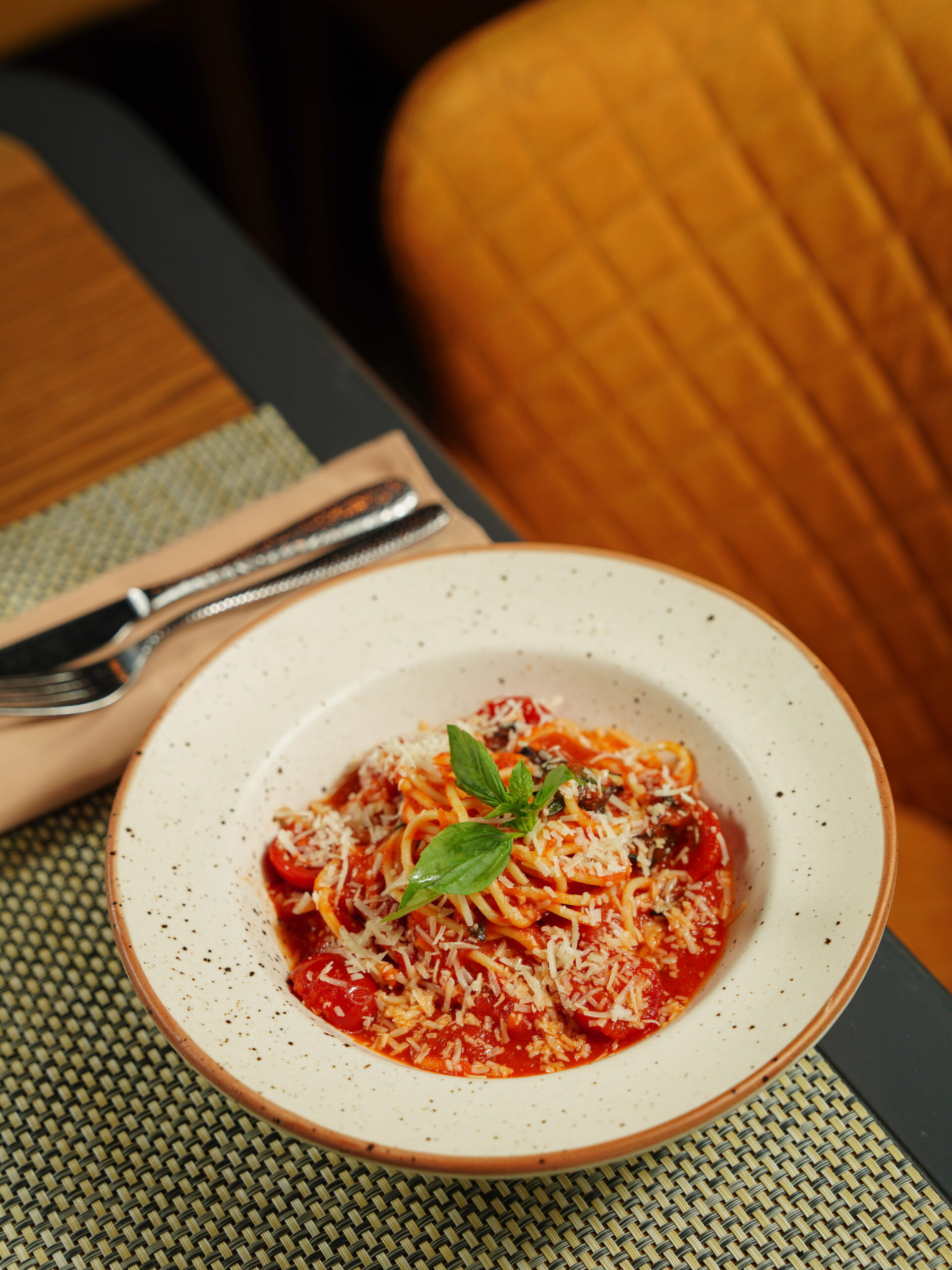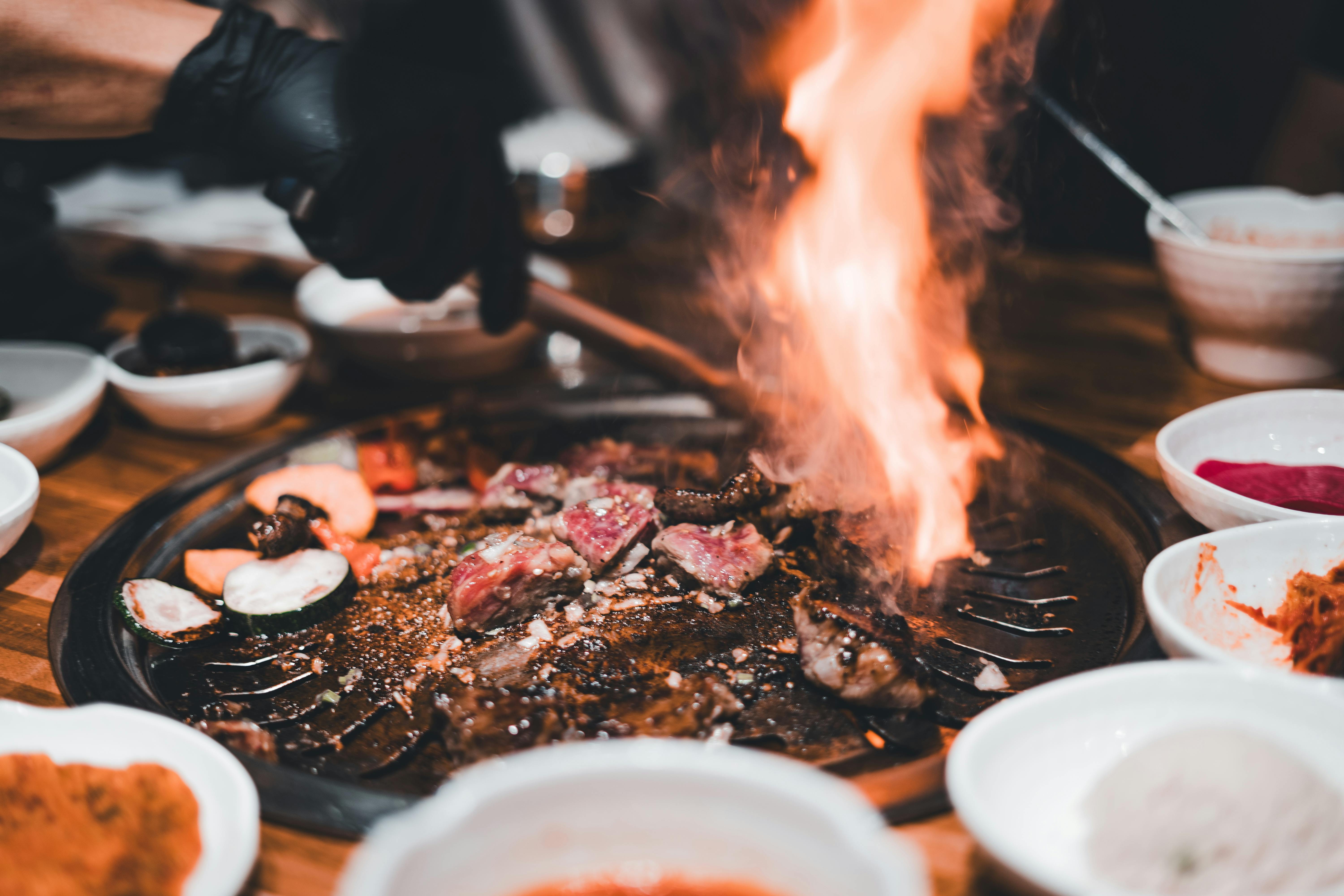Join Tastepan.com as you embark on a culinary adventure through the flavors of the Persian Empire. Immerse yourself in the diverse world of Persian cuisine and discover the rich heritage behind each mouthwatering dish. From fragrant saffron-infused rice to succulent kebabs, you’ll be taken on a journey that will deepen your appreciation for the global tapestry of flavors. Get ready to tantalize your taste buds and uncover the secrets of Persian cooking.

Ancient Persian Cuisine
Ancient Persian cuisine offers a fascinating glimpse into the rich culinary traditions of the Persian Empire. From the intricate flavors to the diverse cooking techniques, Persian cuisine has stood the test of time and continues to enchant food enthusiasts around the world.
Ingredients and Flavor Profiles
One of the defining features of Persian cuisine is its use of a wide array of ingredients, resulting in a harmonious balance of flavors. The flavors often draw inspiration from a combination of sweet, savory, and tangy notes, creating a delightful sensory experience.
Herbs and spices play a crucial role in Persian cuisine, adding depth and complexity to dishes. Key ingredients include saffron, turmeric, cinnamon, cardamom, and cumin. These aromatic spices enhance the unique flavors of Persian dishes, lending them a distinct taste that sets them apart.
Cooking Techniques
Persian cooking techniques are diverse and reflect the ingenuity of ancient Persian chefs. One notable technique is slow-cooking, which allows flavors to meld together and create deliciously tender meats. Stewing and braising are commonly used methods, resulting in succulent and flavorful dishes.
Grilling is also an integral part of Persian cuisine, adding a wonderful charred and smoky flavor to foods. Kebabs, a staple of Persian cuisine, are marinated meats grilled to perfection, creating delectable dishes that are sure to satisfy any palate.
Notable Dishes
Persian cuisine boasts a plethora of mouthwatering dishes that have become synonymous with the rich heritage of Persian gastronomy. One such dish is “Chelow Kebab,” where saffron-infused rice is served with tender grilled meats, creating a symphony of flavors.
Another beloved dish is “Ghormeh Sabzi,” a hearty stew made with an abundance of fresh herbs, tender meats, and kidney beans. This dish showcases the complexity of Persian flavors and is often served with fluffy basmati rice.
Influences on Persian Cuisine
Persian cuisine has been shaped by a myriad of influences over the centuries, resulting in a rich tapestry of flavors that reflects the region’s diverse history, culture, and geography.
Historical Influences
The ancient Persian Empire thrived at the crossroads of various civilizations, leading to significant culinary influences. The conquests of Alexander the Great and subsequent Hellenistic rule brought Greek influences to Persian cuisine, resulting in the fusion of flavors and cooking techniques.
Similarly, the Persian Empire’s interaction with the Silk Road trade route introduced new ingredients and flavors, such as the use of spices from Asia and the Middle East. These historical influences have left an indelible mark on Persian cuisine, creating a unique culinary heritage.
Cultural Influences
Persian cuisine has been shaped by the rich cultural tapestry of the region. The influence of Arab, Turkish, and Mongol cultures is evident in the flavors, ingredients, and cooking techniques employed in Persian dishes.
Arab influences can be seen in the abundant use of aromatic spices and the intricate techniques of preserving and marinating meats. Turkish influences are reflected in the use of yogurt-based sauces and the tradition of grilling meats. Mongol influences introduced the concept of dumplings and noodles, further diversifying the Persian culinary landscape.
Geographical Influences
The geographical diversity of Persia has played a significant role in shaping its cuisine. From the lush Caspian Sea region to the arid deserts of Kerman, each region’s unique climate and available resources have influenced the ingredients and dishes specific to that area.
The Caspian Sea region, known for its abundant seafood, showcases dishes such as “Mazandarani Fish Stew,” highlighting the region’s coastal flavors. In contrast, the mountainous regions of Kurdistan are renowned for their use of lamb and fragrant herbs, resulting in dishes like “Kurdish Lamb Kebabs.”

Key Ingredients in Persian Cuisine
Persian cuisine is imbued with a diverse range of ingredients that come together in perfect harmony, creating a symphony of flavors and textures.
Herbs and Spices
Herbs and spices are the backbone of Persian cuisine, elevating dishes with their aromatic profiles. Saffron, known as the “red gold,” is highly prized and adds a distinct floral and earthy flavor to various dishes. Turmeric, with its vibrant golden hue, imparts a warm and slightly bitter taste.
Cinnamon, cardamom, and cumin are also commonly used, providing warmth and depth to both savory and sweet dishes. Fresh herbs such as parsley, cilantro, mint, and dill feature prominently in Persian cuisine, adding a burst of freshness to salads, stews, and rice dishes.
Meats and Proteins
Meats, especially lamb and chicken, are staples in Persian cuisine. The meats are often tenderized through marination or slow-cooking techniques, resulting in succulent and flavorful dishes. Kebabs, made with marinated and grilled meats, are an integral part of Persian cuisine and come in various forms, such as Koobideh (ground meat) and Barg (filet).
Other sources of protein, such as fish and legumes, are also widely utilized. Fish, particularly white fish, is often used in dishes along the Caspian Sea region. Legumes, including chickpeas, lentils, and kidney beans, feature prominently in stews and rice dishes.
Grains and Bread
Grains play a vital role in Persian cuisine, with rice taking center stage. Basmati rice, known for its delicate aroma and long grains, is a staple in Persian households. The preparation of rice is an art form in itself, with techniques such as steaming and “tahdig” (a crispy rice crust) creating layers of textures and flavors.
Bread, in the form of “naan” or “lavash,” is also a common accompaniment to meals. These flatbreads are baked to perfection and served warm, providing a satisfying base for various dips and stews.
Vegetables and Fruits
Vegetables and fruits add vibrant colors and freshness to Persian dishes. Eggplant, tomatoes, and bell peppers are frequently used in stews and rice dishes, adding depth and richness to the flavors. Fresh herbs, such as mint and parsley, are also used abundantly, enhancing the overall taste of dishes.
Fruits, both fresh and dried, are integral to Persian cuisine. Pomegranates, dates, and figs are commonly used, lending their natural sweetness and tartness to both savory and sweet dishes. The use of dried fruits in dishes like “Jeweled Rice” adds a delightful burst of flavor and texture.
Dairy and Dairy Products
Dairy products play a significant role in Persian cuisine, adding richness and creaminess to dishes. Yogurt, in particular, is widely used in marinades, sauces, and dips. “Mast-o-Khiar,” a refreshing cucumber and yogurt dip, is a popular accompaniment to many Persian meals.
Butter and ghee (clarified butter) are also commonly used in cooking, adding a luscious and velvety texture to dishes. Cheese, such as feta and traditional Persian cheese like “Panir,” are also enjoyed as standalone dishes or incorporated into various recipes.
Regional Variations of Persian Cuisine
Persian cuisine exhibits a diverse range of regional variations, each influenced by the unique geography, climate, and cultural traditions of the specific area.
Northern Iranian Cuisine
Northern Iranian cuisine, influenced by the lush Caspian Sea region, boasts an abundance of seafood, rice, and richly flavored stews. “Mirza Ghasemi,” a smoky eggplant and tomato dip, is a specialty of this region. The dish showcases the region’s vibrant produce and highlights the Persian love for eggplant.
Southern Iranian Cuisine
In the southern region of Iran, the cuisine showcases its proximity to the Persian Gulf. Seafood, rice, and fragrant spices take center stage in dishes like “Ghalieh Mahi,” a spicy fish stew made with a flavorful tomato base. The cuisine of this region is known for its bold and robust flavors.
Eastern Iranian Cuisine
The eastern region of Iran, with its arid climate, focuses on hearty meat and rice dishes. “Khoresht-e-Qeimeh,” a lamb and split pea stew, is a hallmark of the eastern Iranian cuisine. The dish emphasizes the region’s reliance on legumes and meats derived from livestock.
Western Iranian Cuisine
The western region of Iran bordering Iraq showcases a fusion of Persian and Arab influences. The use of spices and fragrant herbs is prevalent in this region’s cuisine. “Khoresht-e-Fesenjan,” a rich and sweet duck or chicken stew made with pomegranate molasses and ground walnuts, is a signature dish in western Iranian cuisine.

Traditional Persian Beverages
Persian cuisine extends beyond its delicious dishes to a range of traditional beverages that complement the flavors and add a refreshing touch to any meal.
Doogh (Yogurt Drink)
Doogh, a traditional Persian yogurt drink, is synonymous with Persian cuisine. It is made by combining yogurt, water, and salt, and often infused with dried mint and carbonation. Doogh offers a refreshing and tangy respite, particularly during hot summer days, and is often enjoyed alongside kebabs and rice dishes.
Sherbet
Sherbet is a popular traditional Persian drink that has a long history in Persian cuisine. Made by combining fruit syrups, such as rose, mint, or lemon, with water and sugar, it offers a sweet and cooling experience. Sherbet is often served at festive occasions and celebrations.
Sekanjabin (Vinegar and Honey Drink)
Sekanjabin is a delightful beverage made with a blend of vinegar, honey, and water. It is both sweet and tangy, providing a refreshing contrast of flavors. Sekanjabin has been enjoyed in Persian cuisine for centuries and is believed to have medicinal properties.
Black Tea
Black tea holds a special place in Persian culture and is an integral part of Persian hospitality. Often served with a sugar cube or a sprig of mint, black tea is enjoyed throughout the day. The tea is steeped to perfection, contributing to its distinct aroma and flavor.
Persian Cuisine Through the Ages
The evolution of Persian cuisine can be traced back through the ages, with each era leaving its mark on the culinary traditions of Persia.
Pre-Islamic Era
Before the advent of Islam, ancient Persians enjoyed a rich and diverse culinary culture. The region’s fertile lands and access to spices through trade routes allowed for the creation of intricate and indulgent dishes. Herbs, spices, and a variety of meats were used abundantly, showcasing the opulence and grandeur of Persian cuisine.
Islamic Era
With the rise of Islam, Persian cuisine underwent a transformation influenced by religious beliefs and cultural practices. The concept of Halal, or permissible food, became prevalent, shaping the dietary traditions of Persian Muslims. The use of aromatic spices and herbs continued, and new flavors were introduced through the Persian conquests and trade connections.
Safavid Dynasty
The Safavid Dynasty played a crucial role in the development and promotion of Persian cuisine. During this time, elaborate banquets and feasts became a symbol of power and luxury. The dynasty’s epicurean culture placed great emphasis on artistic presentation and the use of exotic ingredients, resulting in the creation of exquisite dishes that delighted the senses.
Modern Era
In the modern era, Persian cuisine has retained its rich heritage while adapting to global culinary influences. Persian restaurants can be found in many major cities worldwide, introducing a broader audience to the flavors and traditions of Persian gastronomy. Through generations, Persians have preserved their culinary traditions, passing down recipes and techniques that continue to captivate taste buds.
Ethnic and Cultural Influences on Persian Cuisine
The diverse ethnic and cultural influences throughout history have contributed to the transformation and enrichment of Persian cuisine.
Arab Influences
Arab influences on Persian cuisine are apparent in the abundant use of spices and flavors that have become synonymous with Persian dishes. The arrival of Islam brought culinary practices such as marinating and slow-cooking meats to Persian cuisine. Arab traders and settlers also introduced new ingredients and cooking techniques, further broadening the culinary repertoire.
Turkish Influences
Turkish influences on Persian cuisine are notable in the shared use of yogurt-based sauces, kebabs, and grilled meats. The migration of Turkic tribes into Persia brought with it not only culinary practices but also a fusion of flavors. Turkish sweets, such as baklava, have become popular in Persian cuisine and are enjoyed both in Turkey and Iran.
Mongol Influences
The Mongol Empire’s conquest of Persia left a lasting mark on the region’s cuisine. Mongol influences can be seen in the introduction of dumplings and noodles, adding diversity to the Persian culinary landscape. The Mongols also introduced a preference for sour flavors, which is apparent in dishes like “Khoresht-e-Fesenjan,” where pomegranate molasses contributes to the dish’s distinct tanginess.
Persian Cuisine and Festivals
Persian cuisine is deeply intertwined with the celebration of various festivals and occasions, where food takes center stage in marking these special events.
Nowruz (New Year)
Nowruz, the Persian New Year, is a celebration of rebirth and renewal. The festival, which coincides with the arrival of spring, is marked by a lavish spread of traditional dishes. “Sabzi Polo ba Mahi,” a flavorful herb rice with fish, is a popular dish enjoyed during Nowruz, symbolizing abundance and luck.
Mehregan (Persian Festival of Autumn)
Mehregan is a festival celebrating the fall harvest and the arrival of autumn. It is a time to give thanks for the bounties of nature. Traditional dishes such as “Pomegranate Soup” and “Eggplant Stew” are prepared during this festival, incorporating seasonal ingredients and flavors.
Yalda Night (Winter Solstice)
Yalda Night, also known as Shab-e-Yalda, is the longest night of the year and is celebrated with family and friends. Traditional Persian dishes are shared during this joyful occasion, with “Aash-e Reshteh,” a hearty noodle soup, being a staple on the Yalda Night table. The celebration signifies the triumph of light and the anticipation of longer days to come.
The Role of Rice in Persian Cuisine
Rice holds a significant place in Persian cuisine, symbolizing prosperity, abundance, and hospitality. The legacy of rice in Persian cuisine can be traced back thousands of years.
History of Rice in Persia
Rice has been cultivated in Persia for over 2,000 years, with the ancient Persians perfecting the art of rice cultivation. The introduction of rice to Persia through the Silk Road trade route revolutionized Persian cuisine, becoming a staple grain.
During the Islamic era, the Persians perfected the technique of steaming rice, resulting in the creation of signature dishes like “Chelow” and “Polow.” The popularity of rice in Persian cuisine is a testament to its versatility and adaptability to various dishes.
Preparation Techniques
Preparing rice in Persian cuisine is an art form that requires precision and attention to detail. The technique of “Chelow” involves soaking the rice, parboiling it, and then steaming it to perfection. This method ensures each grain remains delicately separate and fluffy.
Another popular rice preparation technique is “Polow,” where rice is steamed with additional ingredients such as herbs, meats, fruits, or vegetables. This technique infuses the rice with the flavors of the accompanying ingredients, creating a harmonious and flavorful dish.
Rice Dishes in Persian Cuisine
Rice dishes hold a special place in Persian cuisine, and there is a wide array of flavorful options to choose from. “Zereshk Polo” is a festive dish made with rice, saffron, and barberries, creating a beautiful contrast of colors and flavors.
“Albaloo Polo,” a fragrant rice dish with sour cherries and saffron, combines sweet and tart flavors in perfect harmony. “Baghali Polo,” made with dill and fava beans, is a popular dish often served with lamb or chicken.
The versatility of rice in Persian cuisine allows for endless possibilities, making it an integral part of every Persian meal.
Persian Desserts and Sweets
Persian cuisine is renowned for its delectable array of desserts and sweets, often showcasing a mesmerizing combination of flavors and textures.
Gaz (Persian Nougat)
Gaz, also known as Persian nougat, is a beloved sweet treat enjoyed throughout Iran. Made with a blend of rosewater, pistachios, and a sticky base of honey and egg whites, Gaz is a chewy and fragrant delight. It is often presented in attractive packaging and is a popular gift during festive occasions.
Baklava
Although commonly associated with Turkish cuisine, baklava has also become a staple in Persian desserts. Layers of delicate phyllo pastry are filled with a mixture of ground nuts, sugar, and spices, and then baked to perfection. Baklava is enjoyed as a sweet conclusion to a meal or as a special treat during celebrations.
Faloodeh (Rosewater Sorbet)
Faloodeh is a refreshing rosewater sorbet that provides a cool respite during hot Persian summers. Thin vermicelli noodles are combined with rosewater, lemon juice, and a sugar syrup base. This delightful frozen treat is often served with a tangy cherry juice, creating a harmonious balance of flavors.
Shirini (Persian Pastries)
Persian pastries, known as “Shirini,” are an integral part of Persian cuisine and are enjoyed with tea or as a sweet indulgence. From saffron-infused almond cookies to flaky pastries filled with dates and nuts, Shirini encompasses a wide array of delightful treats that showcase the artistry and craftsmanship of Persian bakers.
Persian cuisine offers a captivating journey through time, culture, and flavors. From ancient traditions rooted in the Persian Empire to the fusion of influences that have shaped modern Persian cuisine, the culinary heritage of Persia continues to enthrall and delight. Embark on a gastronomic adventure and savor the unique flavors and aromas of Persian cuisine, experiencing firsthand the rich tapestry of flavors and traditions that make it truly extraordinary.

